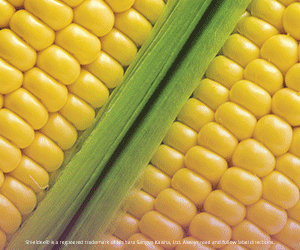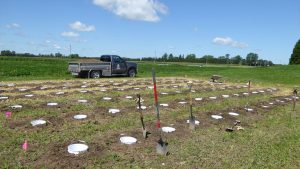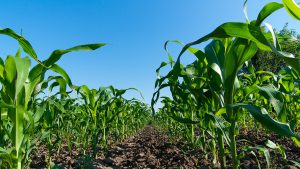The consumer conversation
2017 GEORGE MORRIS AGRIFOOD POLICY LECTURE

HOW DOES THE agriculture industry talk to consumers about food? A look through a different lens can reveal answers to this question.
This topic was part of the George Morris AgriFood Policy lecture hosted by the Department of Food and Agricultural Resource Economics at the University of Guelph. Keynote speaker Jayson Lusk, the head of the Department of Agricultural Economics at Purdue University, discussed that economics play a role in the way the agriculture industry should talk to consumers.
In Lusk’s Future of Food lecture he identified the growing divergence between people who eat food and those that farm. This is not a new theme, but Lusk uses economics to explain what drives these consumers.
“My premise is; the debate is shaped by those with the ability to access political power and media outlets,” said Lusk. These influential consumers are young, urban, and with disposable money to spend.
Lusk’s second premise is that inequality creates a divergence between the rich and the poor. Influencers on food and agriculture are not the same people directly affected by food movements. People with the means to pay more for food are the same demographic that care about specialty or niche foods (like organic or non-GMO). Lower income groups are less concerned about specialty foods, but are also less involved in the agri-food debate.
Lusk’s third and final premise is that there are diverging population trends in high versus low economic areas. “Population growth in wealthy countries is small, while the population growth in lower income countries is higher,” said Lusk.
The message that the world needs agricultural technology to feed the growing population by 2050 is true, but does not resonate with the food influencers in areas with smaller population growth — such as the United States and Canada.
So what do these trends mean? For Lusk, economics points to the facts that influencers on the topic of food and agriculture are young and wealthy; they do not worry about affording meals or how world population growth affects food supply.
“In the U.S., who influences the conversation about food?…And what is most important to them? They are concerned about novelty, nutrition, safety, and taste,” said Lusk.
When communicating about science and technology in agriculture, farmers must appeal to these influencers’ values. It is more than just getting a message out. The industry needs to get consumers excited about technology by telling stories in personal and exciting ways.
Tell the fertilizer application story by talking about how precision agriculture is making application safe and precise. Tell consumers how technology and yield maps mean farmers can be precise to specific field zones. Tell them how this impacts them as consumers and how it helps the environment.
Make them part of the story and the food movement. “We don’t want to be at war,” said Lusk, “we want to be in the same room with them talking — and talking in a way that appeals to them.” •










